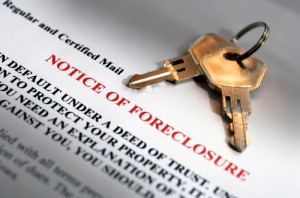 There is a relatively new phenomenon that is hitting the nation’s housing market and it is becoming something of a widespread problem. In states across the country, the foreclosure process is being initiated on homes but not followed through to completion. The home hangs in foreclosure limbo and the owner has vacated the premises leaving an empty house that technically doesn’t have an owner. These types of homes are being called “zombie foreclosures” and they are becoming increasingly prevalent throughout the country. It is estimated that 20 percent of all the homes in the US that are in some part of the foreclosure process are zombie foreclosures.
There is a relatively new phenomenon that is hitting the nation’s housing market and it is becoming something of a widespread problem. In states across the country, the foreclosure process is being initiated on homes but not followed through to completion. The home hangs in foreclosure limbo and the owner has vacated the premises leaving an empty house that technically doesn’t have an owner. These types of homes are being called “zombie foreclosures” and they are becoming increasingly prevalent throughout the country. It is estimated that 20 percent of all the homes in the US that are in some part of the foreclosure process are zombie foreclosures.
So what exactly precipitated the “zombie” phenomenon? Many experts believe it is the direct result of the period between 2008 and 2010 when mortgage servicers were overzealously submitting foreclosure documents to the courts. The homeowners who had defaulted on their mortgage loans had already vacated the properties but the courts were forcing banks to restart the foreclosure process on them so the already rampant foreclosures were just multiplying exponentially.
There is no typical zombie foreclosure. They occur in all kinds of neighborhoods from low-income areas to gated communities and everything in between. Many homeowners who received foreclosure noticed didn’t have a proper understanding of their rights or of the foreclosure process. Many of them just assumed that a notice of foreclosure meant that the bank now owned their property and they had to leave immediately. The peak of the foreclosure crisis in the United States saw distressed houses outselling all others which undercut homebuilders and brought prices down significantly. With the number of zombie foreclosures rising steadily across the country, an already volatile housing market could suffer even greater damage.
If lenders try to put cut-rate houses on the market across the US all in a relatively short period of time it could wreak further havoc on not only the housing market but on the overall economy as well. For many, it is difficult to tell the difference between a zombie foreclosure and a house that has simply been on the market for an extended period of time. And unfortunately the problem is not going away any time soon. As a matter of fact it is likely that it will only get worse over the next several years before it gets better. As more zombie foreclosures hit the housing market it is going to become a serious challenge for lenders because the costs involved in keeping zombies on their books will continue to rise as the value of their properties continues to fall.
There are cases in which a zombie will start as a short sale – a deal in which the lender takes a sale offer that is less than what the mortgage is worth – but that sale will never make it to the settlement stage. They are then foreclosed and after a few months they turn up as being “bank owned”. But some banks try to move quickly to foreclose on properties that are vacant and have not yet reached foreclosure sale in order to maintain and secure them. But no matter how hard the banks try, zombies just keep popping up all over the country.


